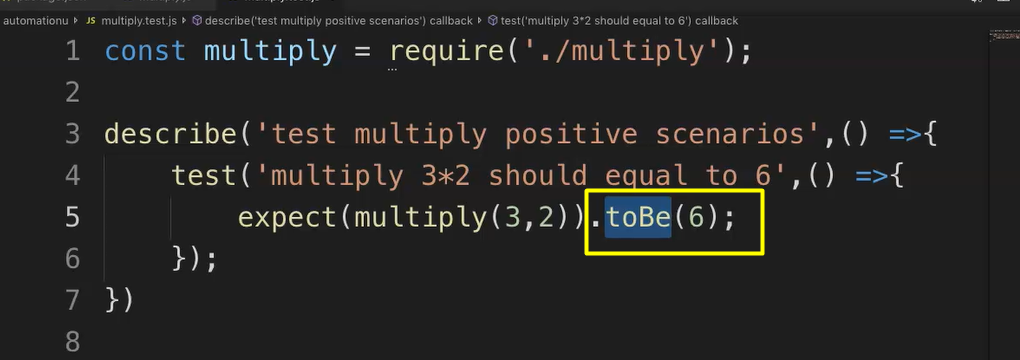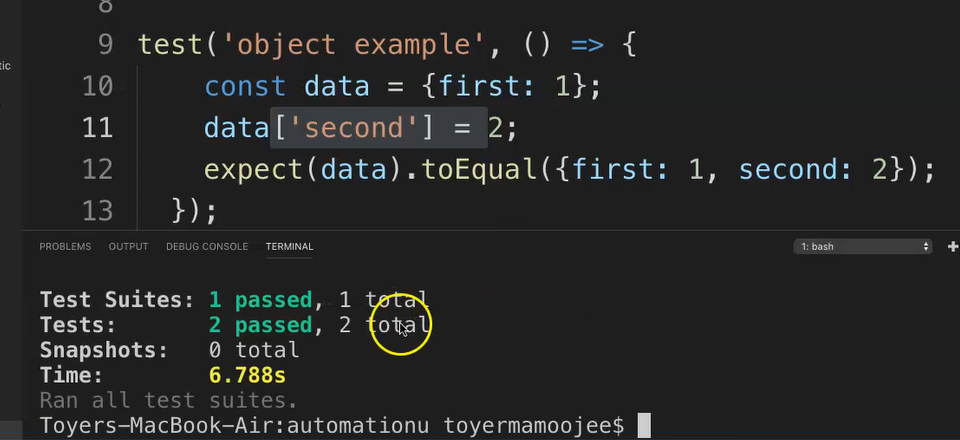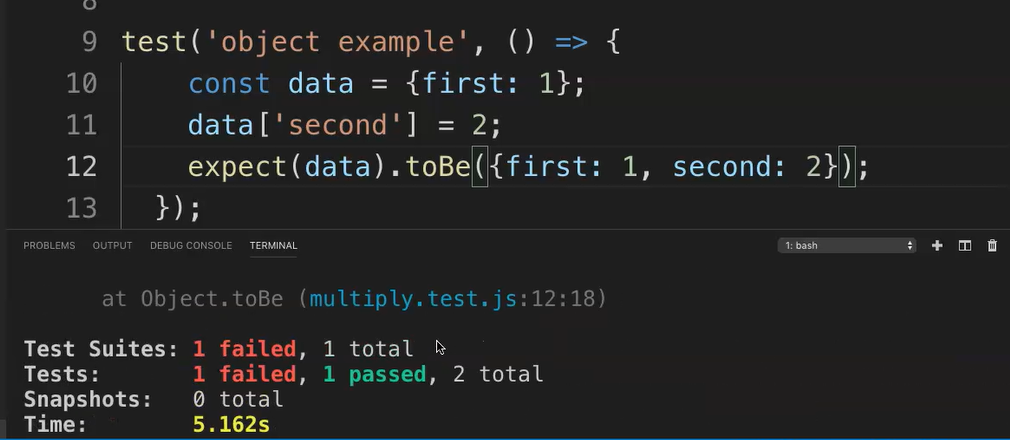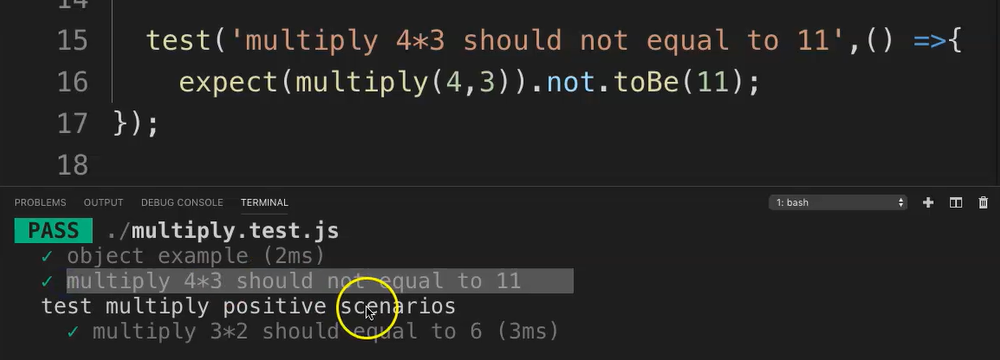
Transcripted Summary
In our previous lesson, we saw an example of a matcher, but I deliberately did not go into the detail of it, due to this particular focused lesson.
# What are matchers?
Typically, matchers are methods that let you test your values.
Ideally, you will always use a matcher in conjunction with a .expect.
The two most common matches are toBe and toEqual.
toBe()uses strict equality.toEqual()tests the value of an object.
In our previous lesson in the example that we used it would really make sense to use toBe here:

As we are testing for values and they are being calculated.
However, the moment we get something like this (and I am going to be pasting another test in here):
# multiply.test.js – comparing toBe and toEqual
const multiply = require('./multiply');
describe('test multiply positive scenarios',() =>{
test('multiply 3*2 should equal to 6',() =>{
expect(multiply(3,2)).toBe(6);
});
})
test('object example', () => {
const data = {first: 1};
data['second'] = 2;
expect(data).toEqual({first: 1, second: 2});
});
If you look at this 2nd test, we're basically adding an object first and then adding a second to it with that value.
And then expecting the data to equal first and second [expect(data).toEqual({first: 1, second: 2})].
Now, if you run this, it will run both the tests.
The point here is just to show toEqual versus toBe.
The tests now run…

This now passes, as you can see.
Let's now change toEqual to toBe
test(‘object example', () => {
const data = {first: 1};
data['second'] = 2;
expect(data).toBe({first: 1, second: 2});
});
Let's save this.
And now let's execute.

You can now see the failure because we cannot use toBe, which is reserved for value checking.
# Finally, we'll look at another quick common matcher, and that is to use a not.
Let's take the previous test and add a not before the toBe[not.toBe], then copy the previous tests and then paste it here.
Maybe let's just change the value to “4*3 should not equal to 11”. Then let's change those inputs, 4 and 3.
Okay, and now we add not.
test('multiply 4*3 should not equal to 11',() =>{
expect(multiply(4,3)).not.toBe(11);
});
Let's fix this other test also, so it doesn't fail this time.
Let's see what happens now.
There we go.

It passes.
That's it for the section on common matchers in Jest.
